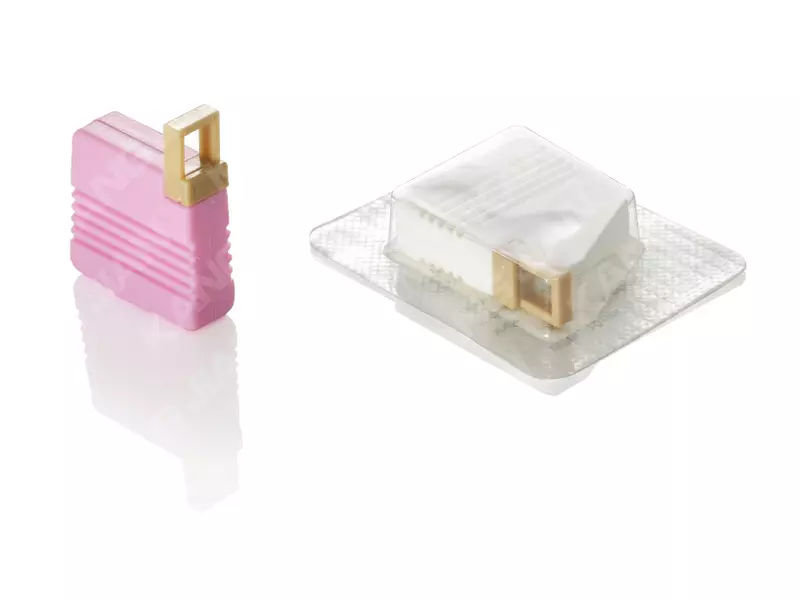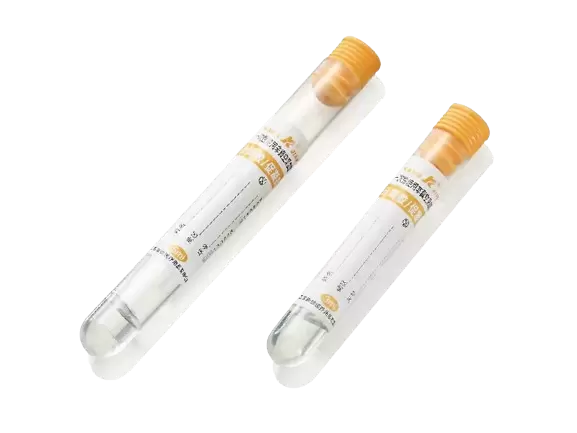Disposable Bleeding Time Device: An Essential Tool in Hemostasis and Diagnostic Procedures
Hemostasis, the body's process of stopping bleeding, is essential to maintaining health. When blood vessels are injured, platelets aggregate at the site of injury, forming a plug to seal the wound. This is followed by the clotting cascade, in which a series of proteins activate to stabilize the platelet plug and stop the bleeding. Abnormalities in hemostasis can lead to excessive bleeding or clotting disorders, and one of the most common tests used to assess platelet function is the bleeding time test. The disposable bleeding time device has transformed the way healthcare professionals assess bleeding time. Traditionally, this test was performed using reusable equipment, but the advent of disposable devices has improved hygiene, patient safety, and ease of use. The disposable bleeding time device is designed to create a controlled wound in the skin to measure the time it takes for bleeding to stop. This test is useful in diagnosing platelet dysfunction, clotting disorders, and in assessing a patient's risk of bleeding during surgery. In this article, Kangjian will discuss the advantages of the disposable bleeding time device in medical diagnostics. By understanding how this device works and its benefits, healthcare professionals can make more informed decisions about patient care.
What is a Disposable Bleeding Time Device?

A disposable bleeding time device is a small, handheld tool used to measure the time it takes for blood to clot after a small controlled injury is made to the skin. The device typically includes a lancet or blade that is used to puncture the skin, creating a standardized wound. The test measures the time required for the wound to stop bleeding, which provides valuable information about platelet function and overall clotting ability. The device is designed for single-use, making it a hygienic and convenient option for healthcare providers. Disposable devices are particularly useful in busy clinical settings, as they reduce the risk of cross-contamination and eliminate the need for sterilization. With its simple design, the disposable bleeding time device offers a fast, cost-effective, and safe way to evaluate bleeding time in a wide range of patients, from those undergoing preoperative assessments to those suspected of having clotting disorders.
Advantages of Using a Disposable Bleeding Time Device in Medical Diagnostics
The disposable bleeding time device offers several key advantages in clinical settings that make it an essential tool for healthcare professionals. Its convenience, cost-effectiveness, safety, and accuracy contribute significantly to improving patient care and ensuring effective diagnostics. Here's a deeper look into the specific advantages this device brings to healthcare environments:
1. Hygiene and Safety
One of the most critical advantages of the disposable bleeding time device is its ability to maintain a high level of hygiene and safety in clinical settings. The single-use design of the device eliminates the risk of cross-contamination between patients, an important factor in healthcare facilities where infection control is a primary concern. Since the device is discarded after each use, there is no need to sterilize or clean it, which reduces the chances of infection transmission. This feature is particularly vital in high-traffic environments like emergency rooms, outpatient clinics, and hospital wards, where numerous patients are treated every day. In these settings, the use of disposable equipment ensures that the potential for harmful pathogens spreading from one patient to another is minimized. Additionally, using disposable devices significantly reduces the time and labor required for sterilization, helping healthcare facilities maintain their strict infection control protocols while enhancing the efficiency of their operations.
2. Convenience and Ease of Use
The disposable bleeding time device is designed for ease of use, making it an excellent option for both trained healthcare professionals and clinical staff with minimal experience in performing bleeding time tests. The intuitive design of the device means that it requires little to no specialized training to use, ensuring that it can be deployed quickly and effectively in a variety of clinical settings. The simple, user-friendly interface reduces the risk of errors during the testing process. Healthcare providers can perform the test efficiently and with confidence, knowing that the device is designed for quick, consistent use. Whether used in a high-pressure emergency room or a routine outpatient visit, the device's straightforward operation allows for seamless integration into daily clinical workflows. This convenience makes the disposable bleeding time device particularly valuable in busy medical environments, where time is often of the essence.
3. Cost-Effectiveness
Compared to more complex diagnostic equipment or laboratory-based tests, the disposable bleeding time device is a cost-effective solution for healthcare providers, particularly in resource-limited settings. The affordability of the device makes it accessible to smaller clinics and healthcare facilities that may not have the budget for expensive equipment or tests. This cost efficiency is especially important in settings where there is a high volume of patients who need quick assessments of their bleeding risk. The disposable bleeding time device allows healthcare providers to offer an essential diagnostic test at a low cost, improving patient care while keeping expenses manageable. Furthermore, the device's single-use nature eliminates maintenance and sterilization costs, contributing to long-term savings for healthcare facilities. In regions with limited access to advanced medical equipment, the low-cost nature of the disposable bleeding time device helps bridge the gap by providing an essential diagnostic tool without the need for extensive infrastructure or high upfront costs.
4. Quick and Accurate Results
The disposable bleeding time device offers fast and reliable results, which is crucial in clinical settings where timely decision-making is necessary. The bleeding time test provides results within a few minutes, enabling healthcare providers to make immediate decisions about patient care, especially in preoperative settings or emergency situations. In emergency departments, for example, rapid bleeding time testing can help assess a patient's clotting function in response to trauma, allowing medical teams to act swiftly to control bleeding and prevent further complications. Similarly, in surgical settings, determining a patient's bleeding risk before surgery is vital to ensure that proper precautions are taken to avoid excessive blood loss during the procedure. The speed and accuracy of the disposable bleeding time device contribute to a faster diagnosis, enabling clinicians to make more informed decisions and initiate the right treatment plans without delay. This is especially critical in high-risk surgeries or in patients on anticoagulant therapy, where managing bleeding risk is paramount.
5. Streamlined Patient Care
The disposable bleeding time device not only offers quick results but also helps streamline patient care. By providing a simple, easy-to-perform test that can be done in-office or in an outpatient setting, healthcare professionals can more easily assess platelet function without the need for extensive lab work or additional tests. This accessibility means that patients receive immediate feedback on their bleeding risk, improving the overall patient experience. Furthermore, this reduces the need for additional follow-up appointments, lab visits, and the delays typically associated with sending samples to external laboratories. For patients, especially those undergoing routine procedures, the device offers a non-invasive, quick, and convenient method of assessing bleeding risk without the discomfort or complexity associated with more invasive diagnostic procedures.
6. Enhanced Patient Safety
Ensuring patient safety is a fundamental goal in every clinical setting, and the disposable bleeding time device plays a key role in safeguarding patients during treatment. By providing a reliable measure of platelet function, the device helps identify patients who may be at risk of excessive bleeding, allowing healthcare providers to take appropriate precautions before surgery or other invasive procedures. Additionally, the device helps identify potential issues with coagulation early, enabling healthcare providers to initiate further testing or treatments as needed. This early detection of abnormal bleeding times can lead to more targeted interventions, ultimately improving patient outcomes. By using a disposable device, healthcare teams can ensure that each patient receives personalized care, minimizing the risks associated with bleeding and clotting disorders.
The disposable bleeding time device plays a critical role in modern diagnostics, offering a simple, effective, and hygienic method for assessing platelet function and clotting ability. Its applications span across a wide range of clinical areas, from diagnosing bleeding disorders to monitoring anticoagulant therapy and evaluating preoperative bleeding risk. The device's convenience, safety, and cost-effectiveness make it an indispensable tool in everyday clinical practice, helping healthcare professionals deliver timely and accurate care to patients at risk of bleeding complications.




